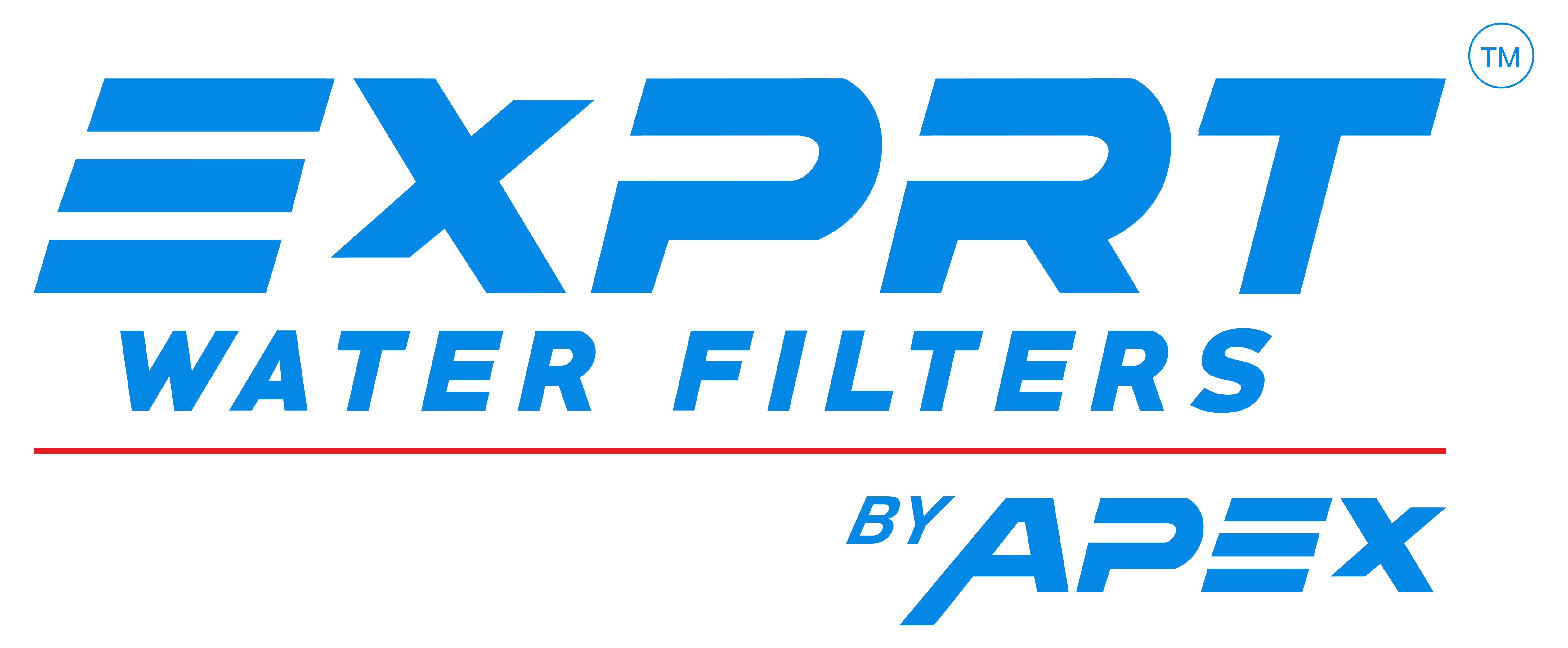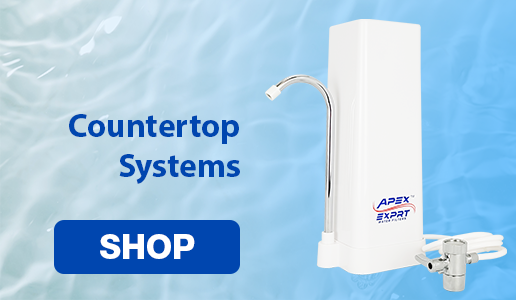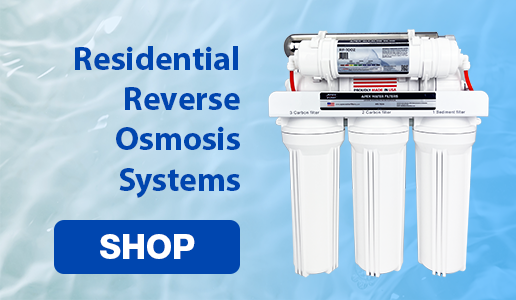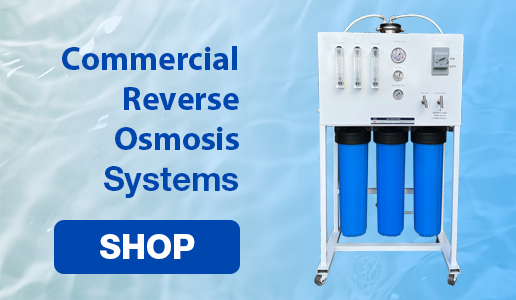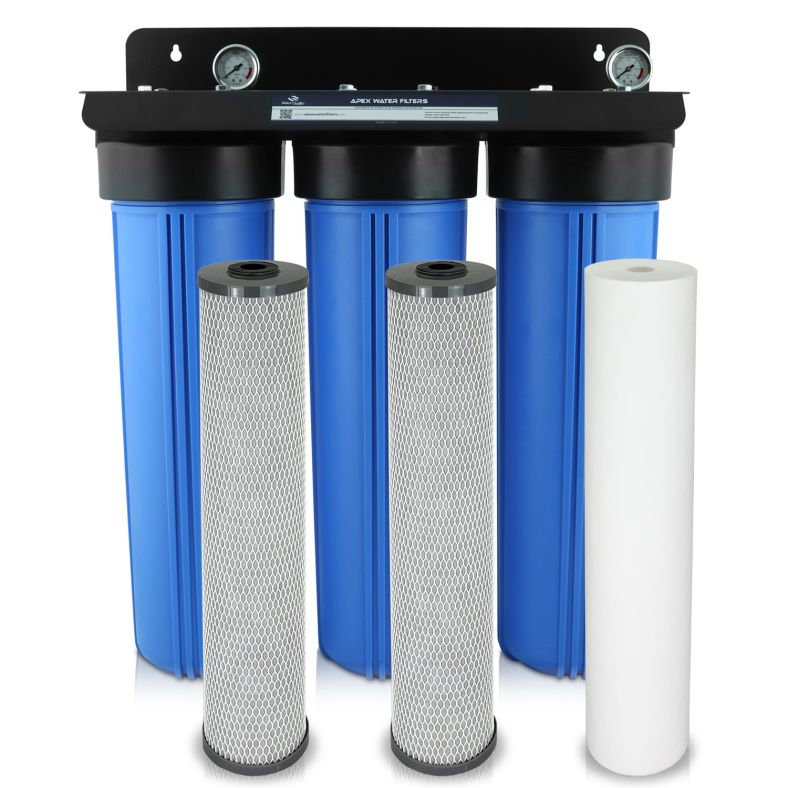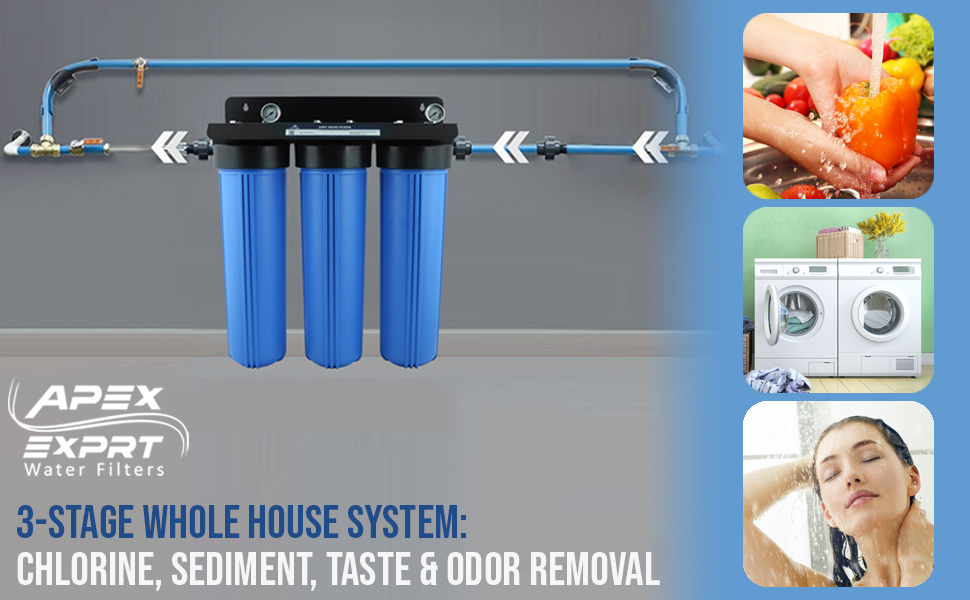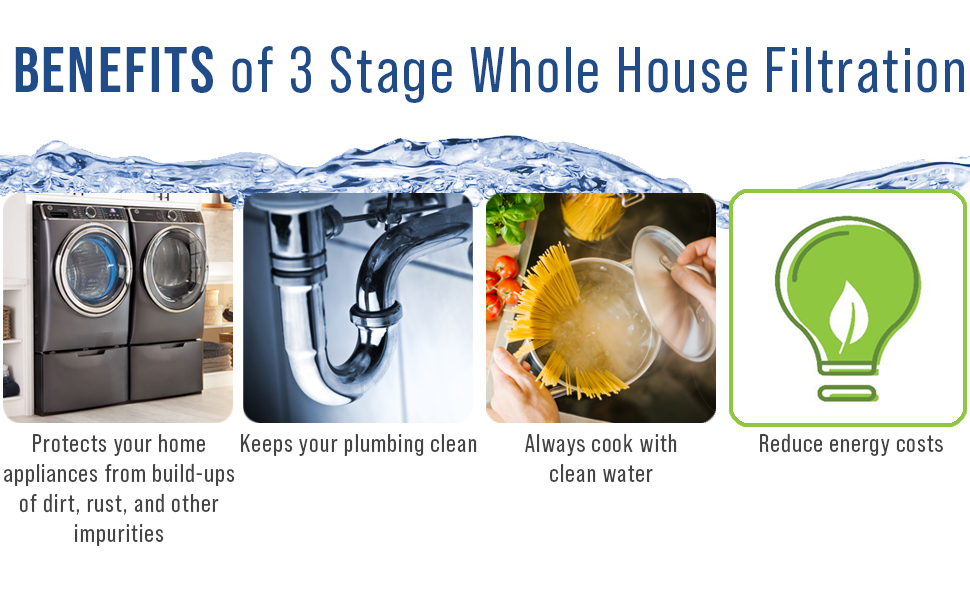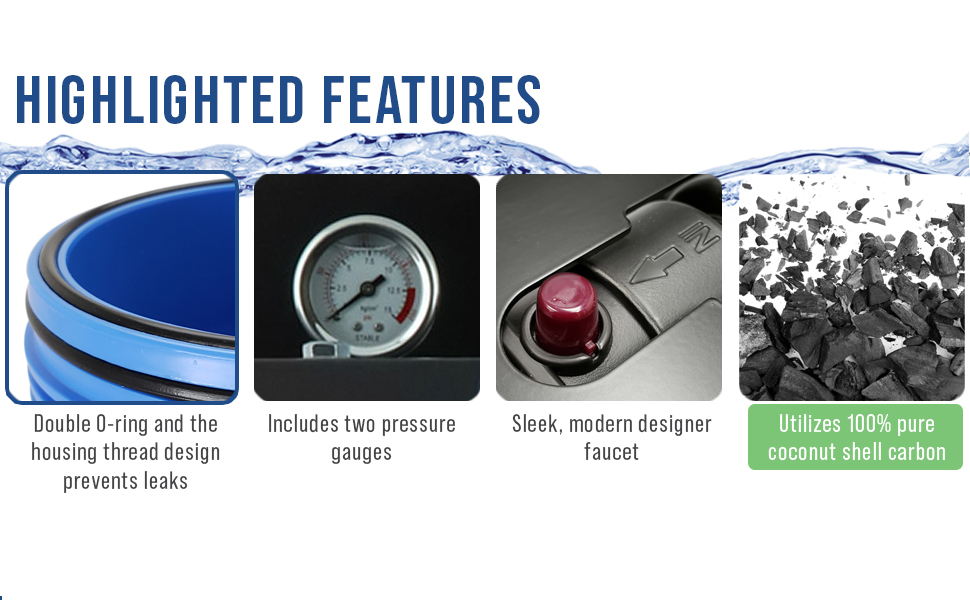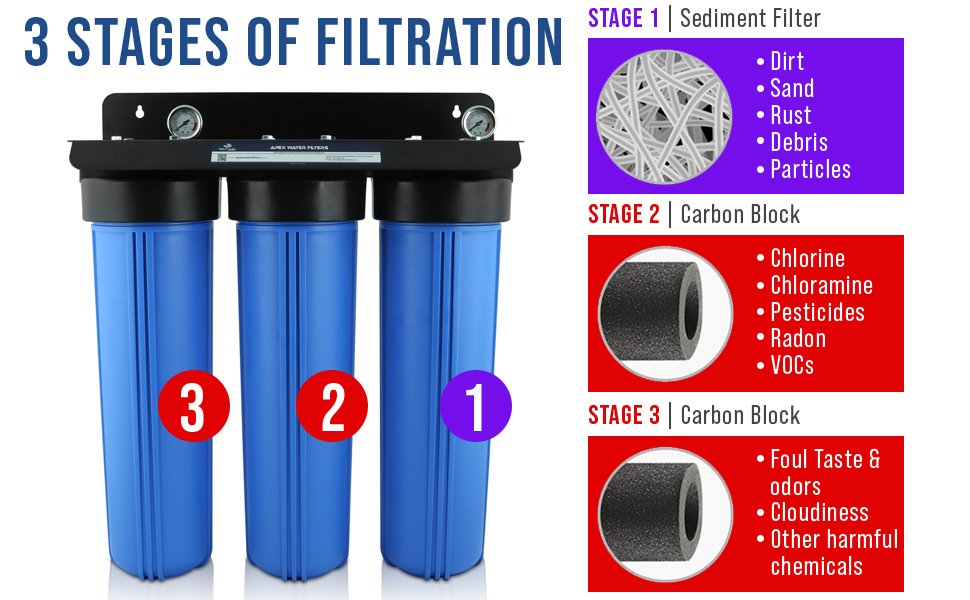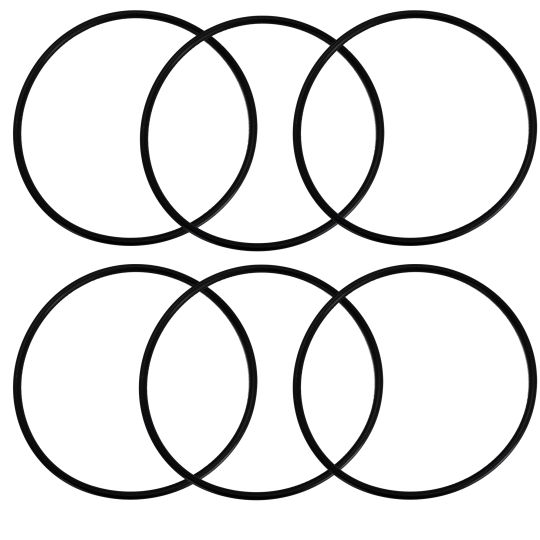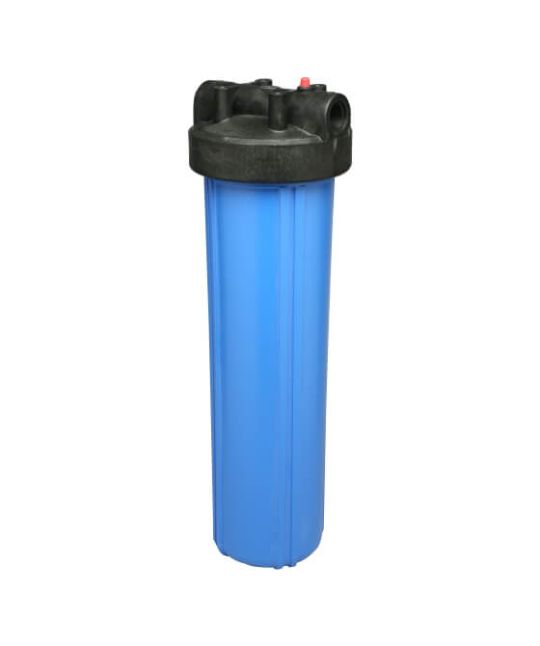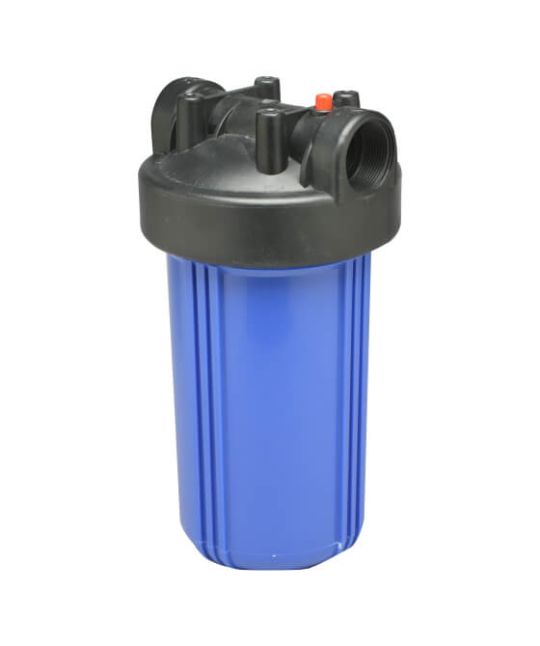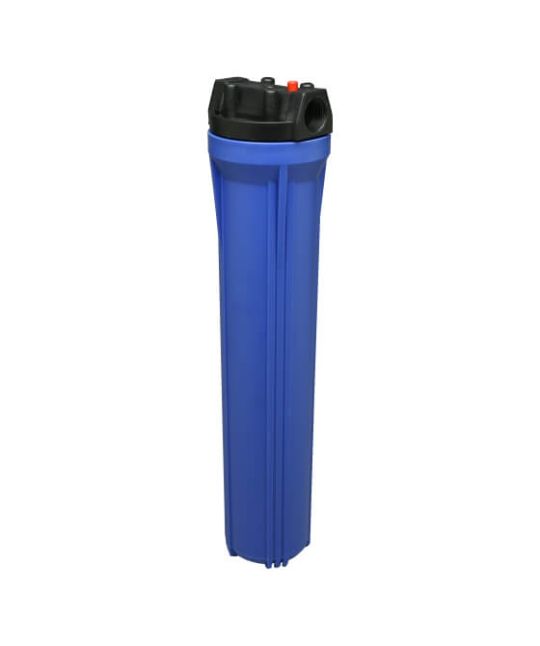MR-3021 3 Stage Whole House System for Sediment, Chlorine & Chemical Removal
- Effectively removes up to 99% of chlorine and reduces pesticides, industrial chemicals, VOCs, dirt, rust, scale, odors, and other impurities commonly found in tap water.
- Delivers clean, filtered water to every faucet & outlet throughout your entire home or business.
- Stage 1: The sediment filter removes dirt, sand, rust, silt, scale, and other sediments to protect your home appliances and faucets from dirt build-up & clogging.
- Stage 2 & 3: The dual carbon blocks effectively removes up to 99% of chlorine and reduces pesticides, benzene, radon, VOCs, THMs, foul taste & odor and other impurities commonly found in tap water.
- Carbon blocks are made from 100% pure coconut shell carbon.
- Comes with high-capacity cartridges that can filter up to 70,000 - 100,000 gallons before they need to be replaced. (May vary based on the quality of the feed water)
- Completely assembled and ready to install (with wall-mount option).
- Designed, manufactured & assembled in the USA with high-quality parts and components that comply with NSF/ANSI standards to ensure longevity and efficient operation.
Note: This system does not reduce TDS. To reduce TDS, a reverse osmosis system is required.
